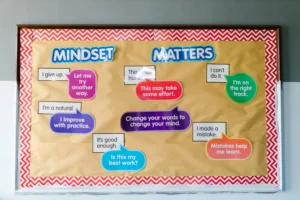Steve Jobs was a genius.
If you haven’t read his autobiography, you need to right away.
Few were better at branding and advertising than him.
And, what does that require?
Copy.
Their advertisements and other assets have mouthwatering copy that we can all learn from.
And, that’s why I’m teaching you today: Apply copywriting strategies.
Let’s take a bite. 🍎
1. Mocking Android users
I’ve owned both Apple and Android phones, so I’m not on either team necessarily. What about you?
Nonetheless, Apple made a cheeky advertisement that played off of the Google Play Store’s safety issues which happened in 2018.
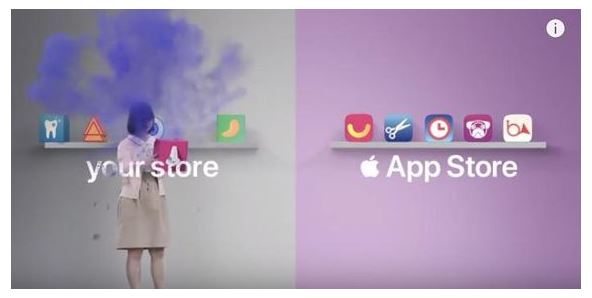
If there wasn’t tension between Apple and Android already, this definitely sealed the deal.
The ad shows a woman grabbing a box from a shelf that blows up in her face.
She moves over to the other shelf, grabs a box, and nothing happens.
Then, the rest of the first shelf comes tumbling down.
Check it out in this video along with other ways Apple has bashed Android:
The only text we see is “Your store” and “App Store.” This implies that the Apple store is easier, friendlier, and safer to use.
Seeing as 54% of consumers believe that companies have misused their data, this is a brilliant angle.
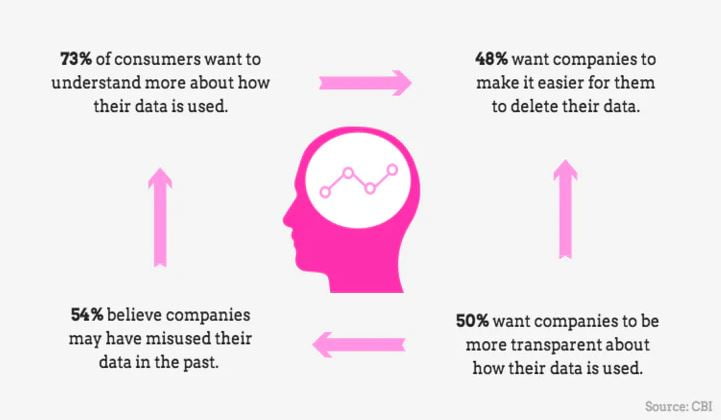
One of the key strategies here is defining a clear opposition. Everyone likes to fight alongside their favorite brand, right? It makes it into a comradery.
On the flip side, if you’re an Android user (Like me nowadays), you might be tempted to look into iPhone if you experienced any downsides to the security situation.
Similarly, by implying that they are a safer product, it displays a unique value proposition.
They didn’t have to name any features or specs—Apple simply let their product speak for itself.
Main takeaways
- What brands can you call out in your advertisement to create friendly competition?
- Play off of recent news events that are on customers’ minds.
- Subtly or directly state a unique value proposition that makes your product clearly better.
2. iPhone’s zero waste campaign
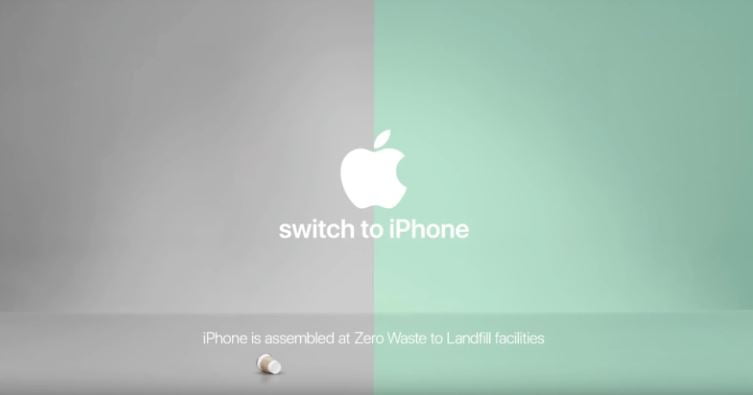
Apple published an ad campaign called Environment, Safe, Ease, and Apple Support.
They were pushing their iPhone X hard around this time, so this campaign lightened the mood and was a breath of fresh air.
It was a series of short videos that showcased important features of the iPhone, which were supposed to be better than competitors.
It was geared toward those on the fence about Apple devices or already thinking about switching over.
It’s playful, bouncy, and upbeat. It also clearly shows you a great feature and how to use it in 30 seconds.
Additionally, they played with the concept of the iPhone being environmentally friendly, which is, of course, another big global issue.
Many people are passionate about saving the earth and doing little things to contribute.
Do you know what that means? Apple knows its customers very well.
They are able to serve them ads that relate to their values, feelings, and beliefs. That, by the way, is more critical than ever.
Customers want to see personalized ads and experiences, not something shown to a million people.
Main takeaways
- Create a campaign that stands out and deviates from what you normally do. Surprise the audience and give them something new. Never be predictable.
- Study customers through surveys, market reports, case studies, and other data to write heavily personalized advertisements.
- Anchor campaigns to a concept like how Apple did with being environmentally friendly. Bonus points if it’s a trending topic.
3. Apple’s homepage offer
Apple’s website is a goldmine for copy. Bring out your shovel, and you’ll have no shortage of golden nuggets.
Look at their homepage offer, for instance:
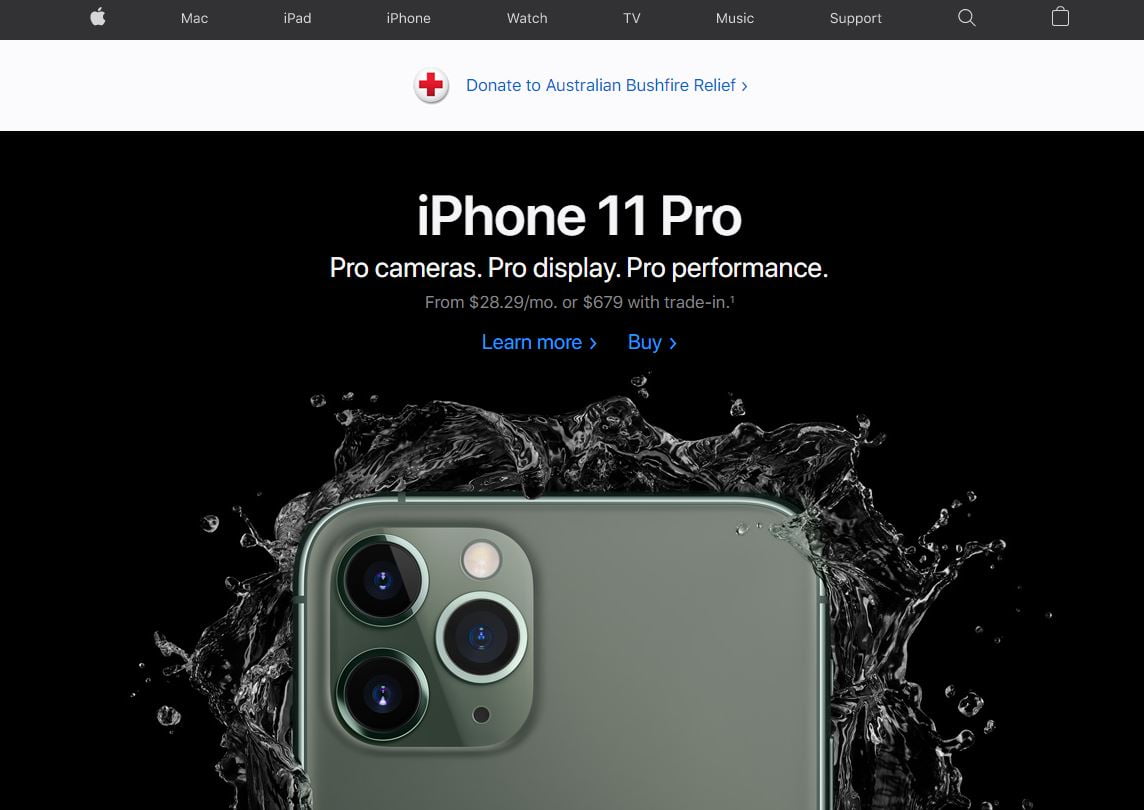
Let’s break this down.
The copy begins with the product title “iPhone 11 Pro” and the sub-title “Pro cameras. Pro display. Pro performance.”
The reader knows exactly what model it is, along with the three best features. ✔
The offer below this in the gray text says, “From $28.29/mo. or $679 with trade-in.”
Customers know exactly how much they’ll need to spend, and who the heck doesn’t want the latest iPhone for $28/month?
That’s a steal!
This is followed by calls to action to learn more about the phone or to buy it.
That means both customer profiles—those still deciding and those who are ready to purchase—are given separate options.
Note how there’s a clear hierarchy of text size, sentence length, and color.
It slims down as it gets toward the CTAs, which are also in an eye-catching blue.
Main takeaways
- Make the price of a product sound like an amazing deal with monthly installments, trade-ins, etc.
- Use a content hierarchy to make reading copy easy. Consider the font size, typography, font color, and sentence length.
- Add high-resolution images to show off product quality and individual features/designs.
4. Light years ahead
If there’s one thing Apple has always been known for, it’s being futuristic.
Steve Jobs was insane (In the best way possible) for thinking about touchscreens, smartphones, and tablets way before anyone else did.
That’s not to mention Macbooks and all of the computers he helped come to life.
It’s also why this straight-forward ad was so powerful:
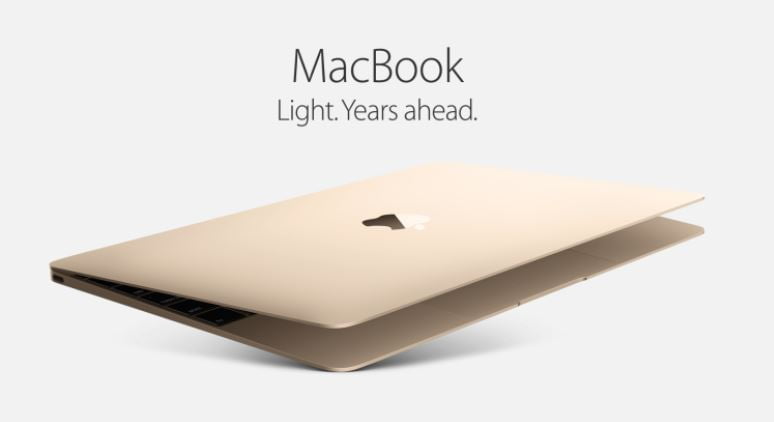
It’s simply titled “MacBook” with “Light. Years ahead.” under it
Catch that play on words?
It’s not “Light years ahead.”
They’re saying the MacBook is lightweight and also years ahead by breaking apart the words with a full stop.
This is an excellent example of simple advertising and copywriting that can make a huge impact.
Everyone already knew Apple, and they’re brand value at the time of this ad.
They had nothing to prove. They continued their authority and improved their product by making it lighter, and thinner, and increasing performance.
You can take one look at that laptop and know it was ahead of its time, especially because it looked like it should be on a NASA spaceship.
Main takeaways
- Experiment with simple advertisement designs that show off the product while using equally simple but powerful messaging.
- Create authority and leadership by not explaining why a product is so good. Let your branding and the product speak for itself.
- Use a play on words to make copywriting stand out and more thought-provoking.
5. App Store ads promotion
Apple announced the launch of App Store Search Ads in July 2018.
These allowed developers to pay for a larger reach to increase the amount of traffic to their apps.
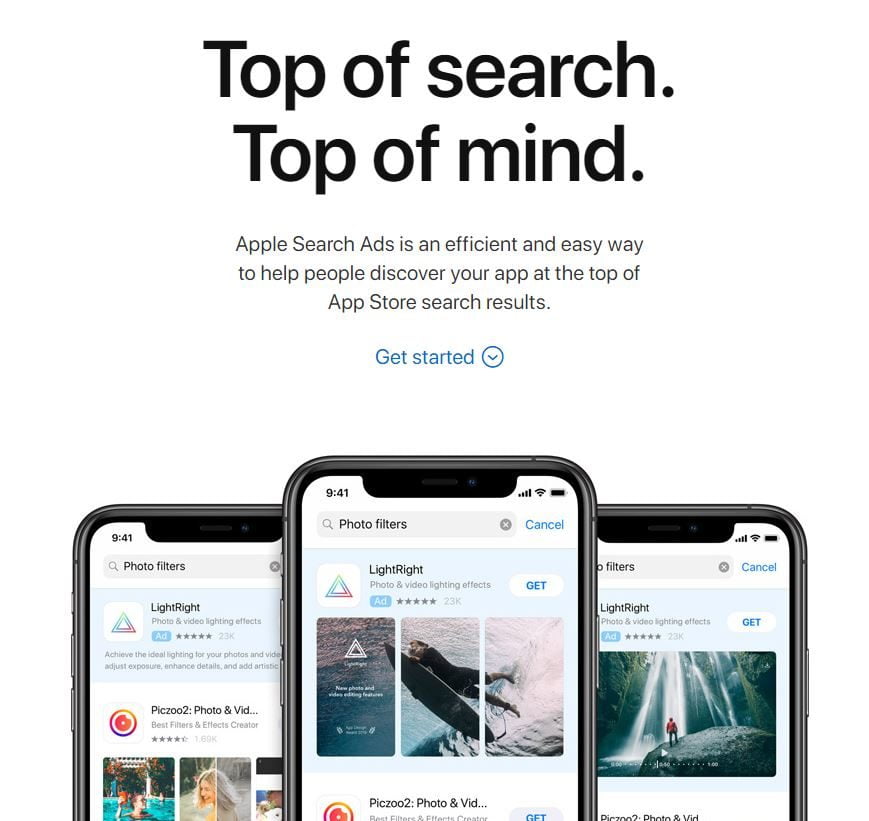
You can see that the page begins with the title “Top of search. Top of mind.”
It’s followed by ” Apple Search Ads is an efficient and easy way to help people discover your app at the top of App Store search results.”
The title speaks to developers’ needs: the desire to be at the top of Apple’s search results and on the mind of consumers. Because that means more Benjamins. 💰
Apple then directly provides the benefit of using its ad platform which is providing an efficient and easy way to become discovered on the App Store.
And, of course, this is followed by the “Get started” call to action.
Scrolling down the page, we see another CTA for $100 of free Apple Search Ads credit.

They also provide statistics to back up their claim that “There’s no better place to be seen than at the top of App Store search.”
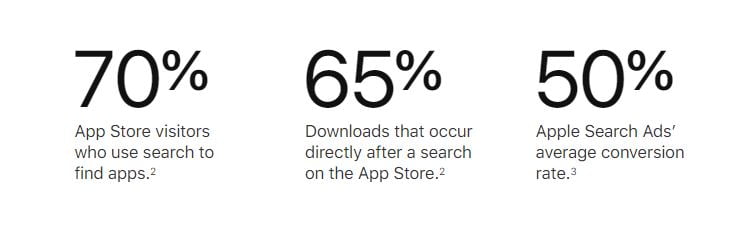
Apple offers two solutions: basic and advanced further down the page along with a couple more feature debuts.
The cherry on top is the success story section, where case studies speak to the effectiveness of the platform.
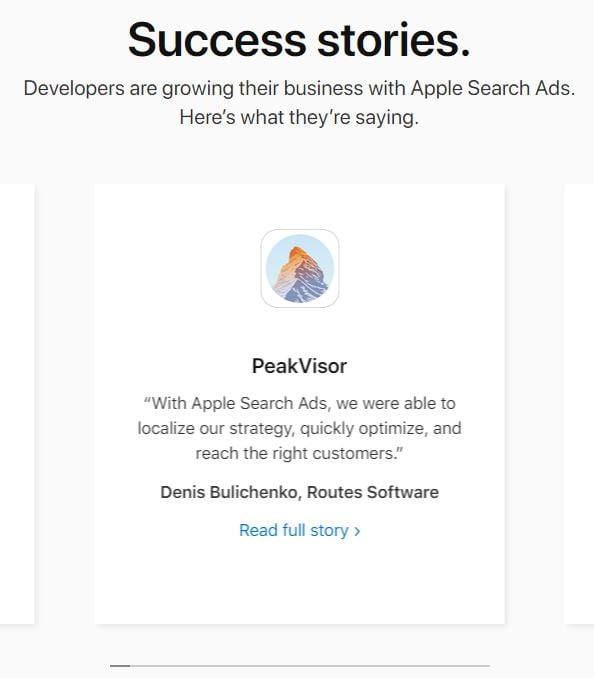
Overall, it’s the perfect flow of copywriting techniques to increase conversions and maximize how much users start using App Store Ads.
Main takeaways
- Write down many different variations of a headline to find one that’s unique and exciting.
- Speak directly to the needs of the consumer.
- What is the benefit of using your product? Clearly state what the customer will get out of it emotionally, financially, etc.
- Use calls to action above every page fold to maximize engagement.
- Increase trust with data and statistics.
- Use testimonials and reviews to increase conversions.
6. Apple’s 1984 ad
It’s the year 1984.
George Orwell has just released his famous dystopian novel titled Nineteen Eighty-Four.
The story involves mass surveillance, an omnipresent government, and constant war.
It made many people paranoid that the events in the book were happening, or going to happen, because of the advance of technology.
Steve Jobs wanted to capitalize on this.
So, he created their most famous ad ever:
It shows a woman dressed in track attire (An Apple tank top, most importantly) with a sledgehammer running through a dystopian environment of drones, machines, and guards.
She reaches a giant screen representing Big Brother, winds up, and throws the hammer.
The screen explodes, and everyone is knocked out of their trance.
It’s followed by a screen of text saying:
On January 24th, Apple Computers will introduce Macintosh. And you’ll see why 1984 won’t be like “1984.”
This was believed to represent Apple saving humanity from conformity and making people more friendly to technology advancements.
Oh, it also helped sell $3.5 million worth of Macintoshes just after they ran the ad.
Main takeaways
- Write advertisements that relate to cultural beliefs and trends, as Apple did with the 1984 concept.
- Position the product as revolutionary and ahead of its time if applicable.
Final thoughts on Apple’s copywriting
Copywriting like Apple isn’t easy.
They’re one of the biggest companies in the world with a Rolodex bigger than your head.
That also means they have the top writers at their disposal at any second.
However, that doesn’t mean we can’t learn a thing or two from these Apple copywriting examples to improve our own writing.
On that note, explore my online courses if you want to take your writing skills to the next level and get mentorship from me.



